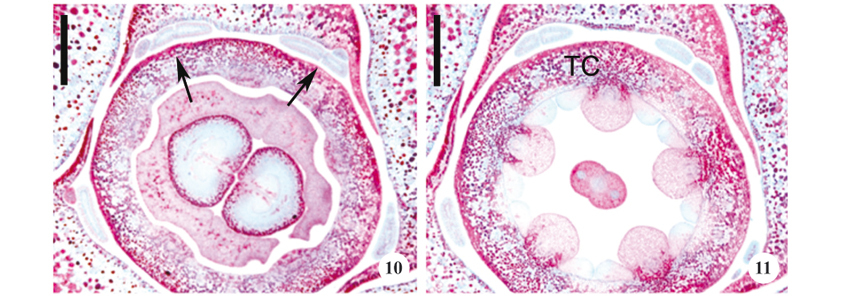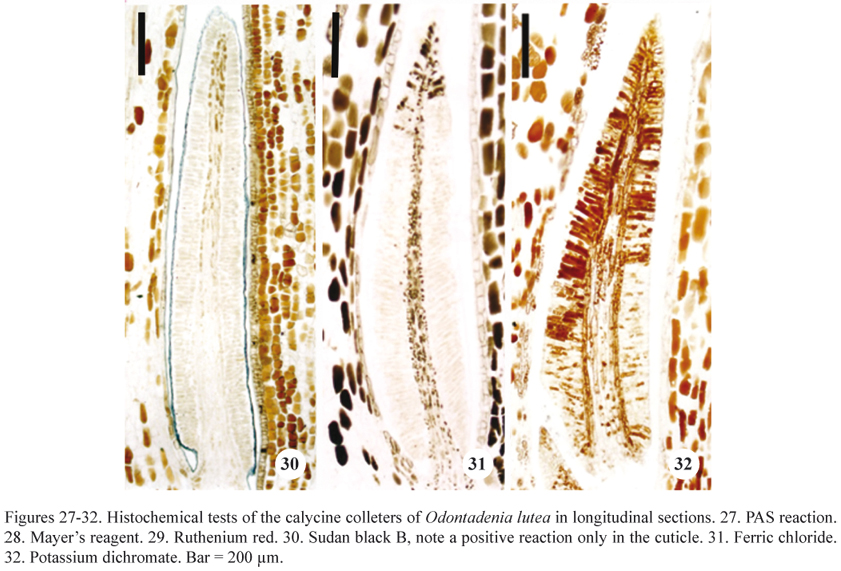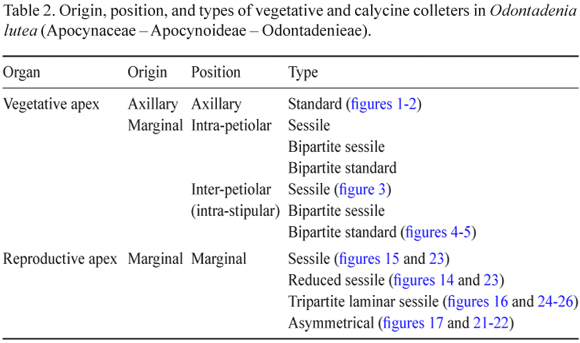The structure and histochemistry of colleters found on the vegetative and floral apices of Odontadenia lutea are described. Colleters occur on vegetative apices starting at the fourth node, with 68 to 80 colleters being found at each node. Each leaf primordium has only one colleter of axillary origin, 3-5 intra-petiolar, and 12-16 inter-petiolar (intra-stipular). There are four types of colleters: standard, bipartite standard, sessile, and bipartite sessile. Colleters on the reproductive apices alternate with the sepals and are sessile, reduced sessile, tripartite laminar sessile, or asymmetrical. All of the colleters have a central nucleus of parenchymatous cells covered by a palisade uniseriate secretory epidermis and a thin cuticle. Secretory idioblasts were observed in the parenchymatous axis. Vascularization was observed only in standard axillary and laminar colleters. Crystals were observed in the parenchyma of the axillary colleter. Histochemical tests demonstrated that there was no rupturing or distension of the cuticle during the secretion process. Mucilage was identified using the PAS reaction as well as by Mayer's reagent and Ruthenium red staining. The calycine colleters had two distinct secretory phases, the first synthesizing mucilage and the second producing phenolic compounds.
mucilage; phenolic compounds; secretory structures














